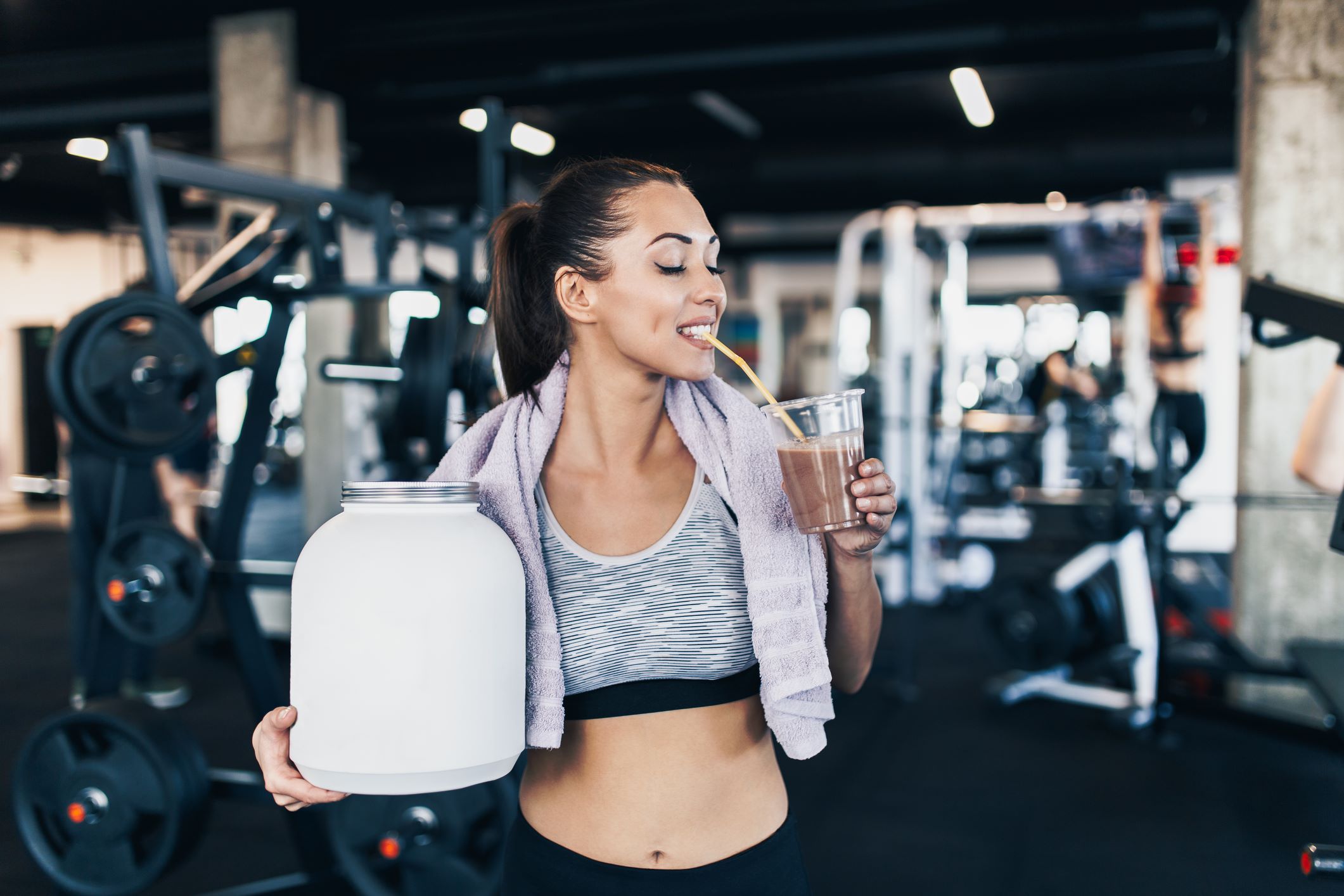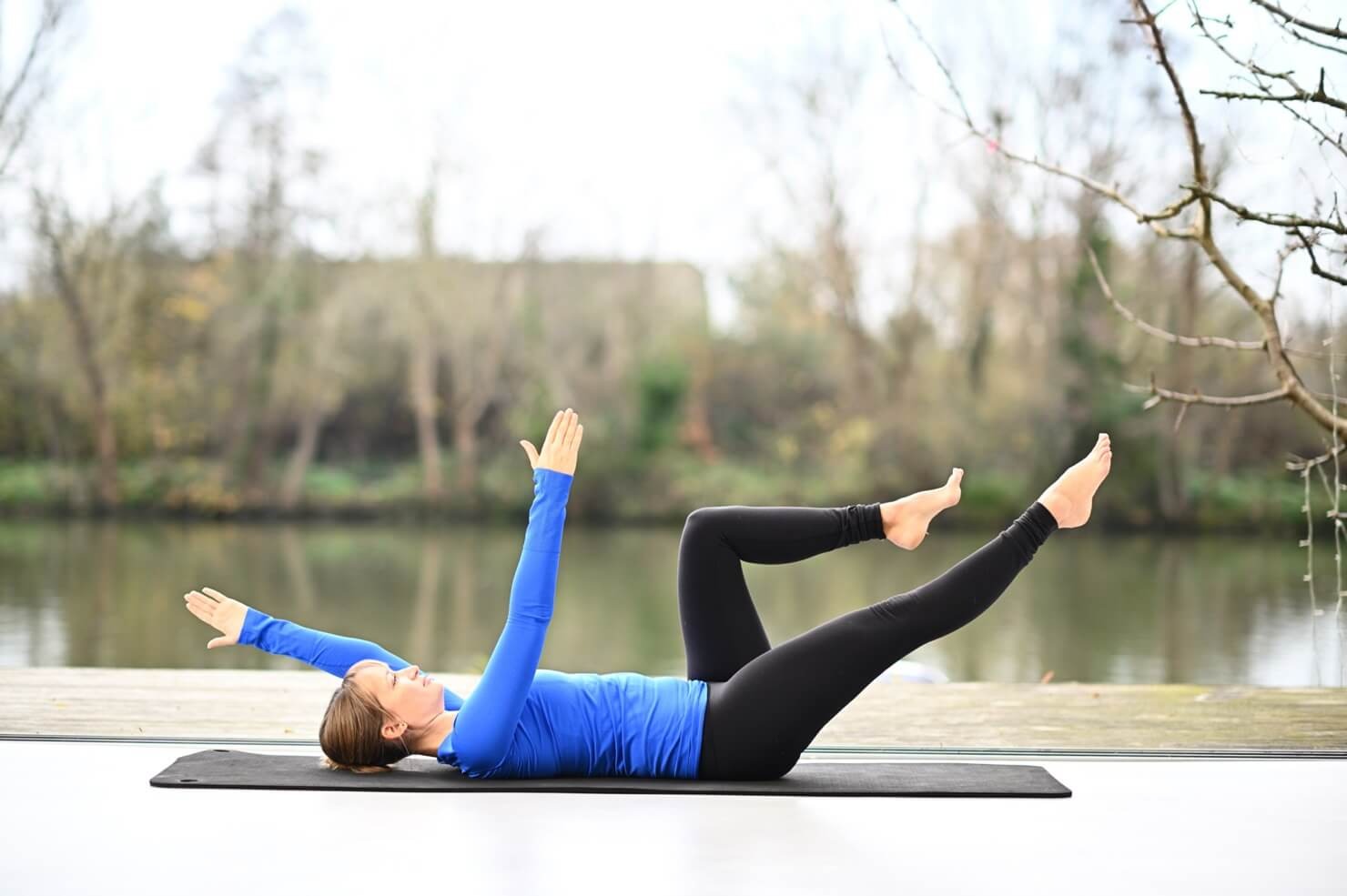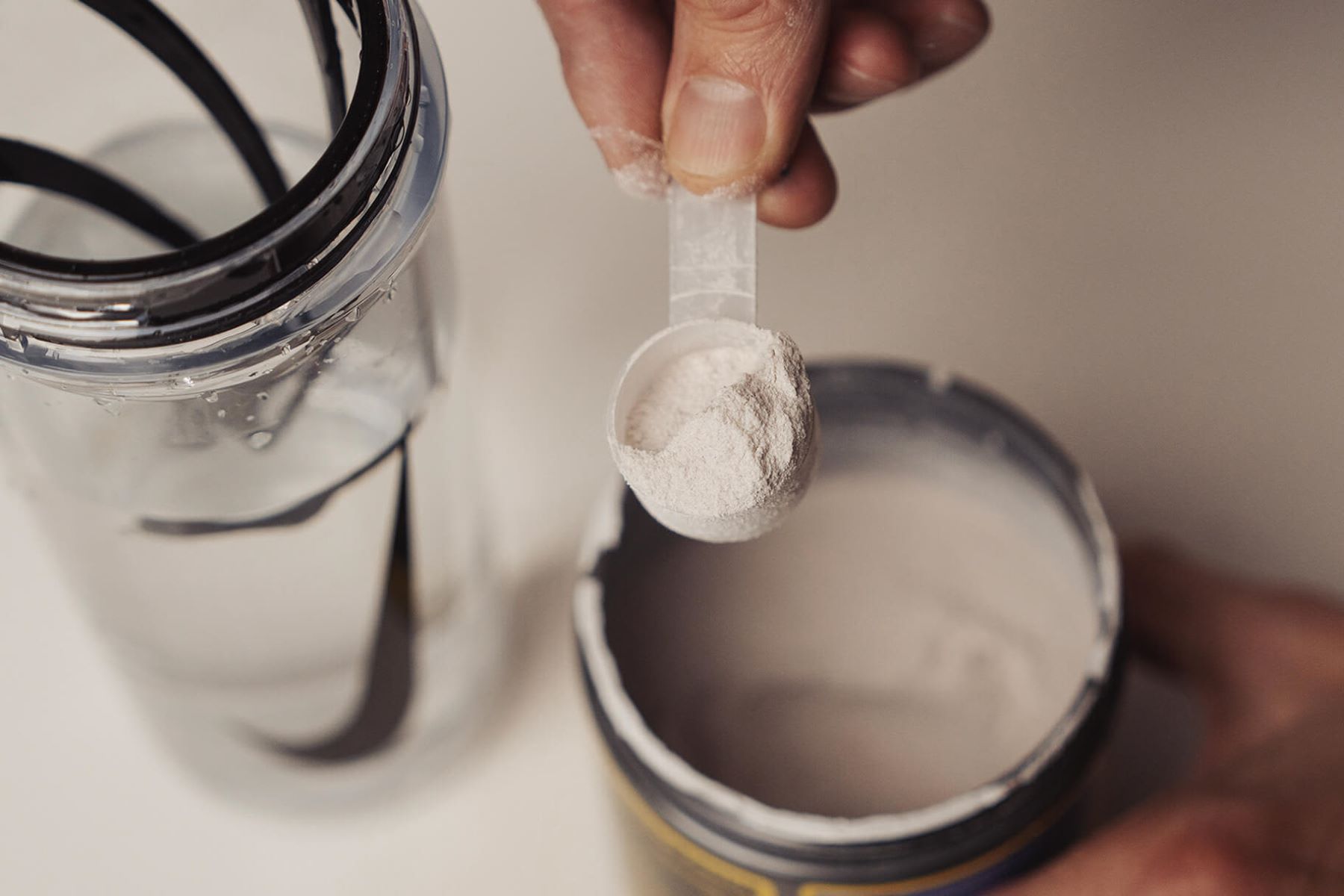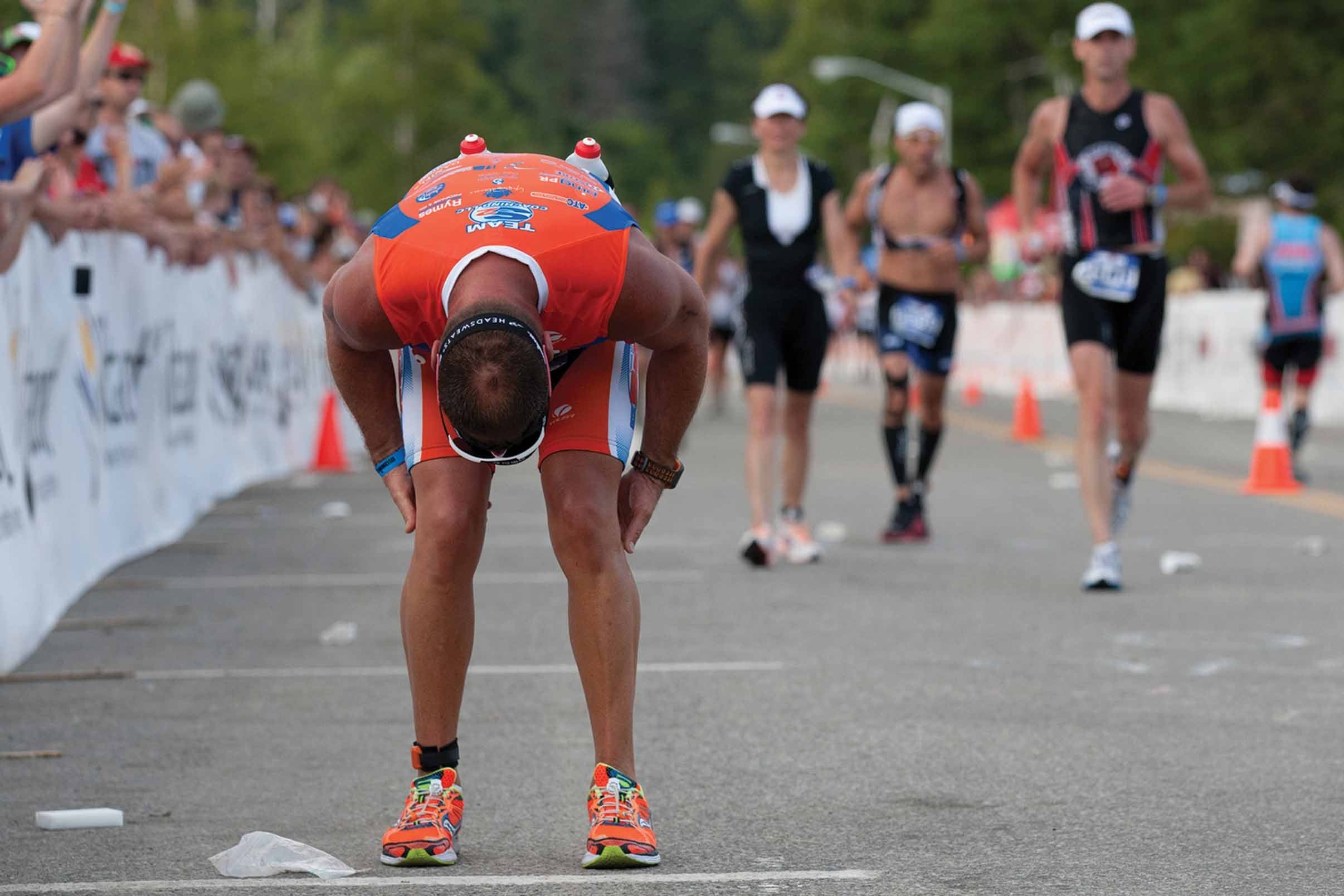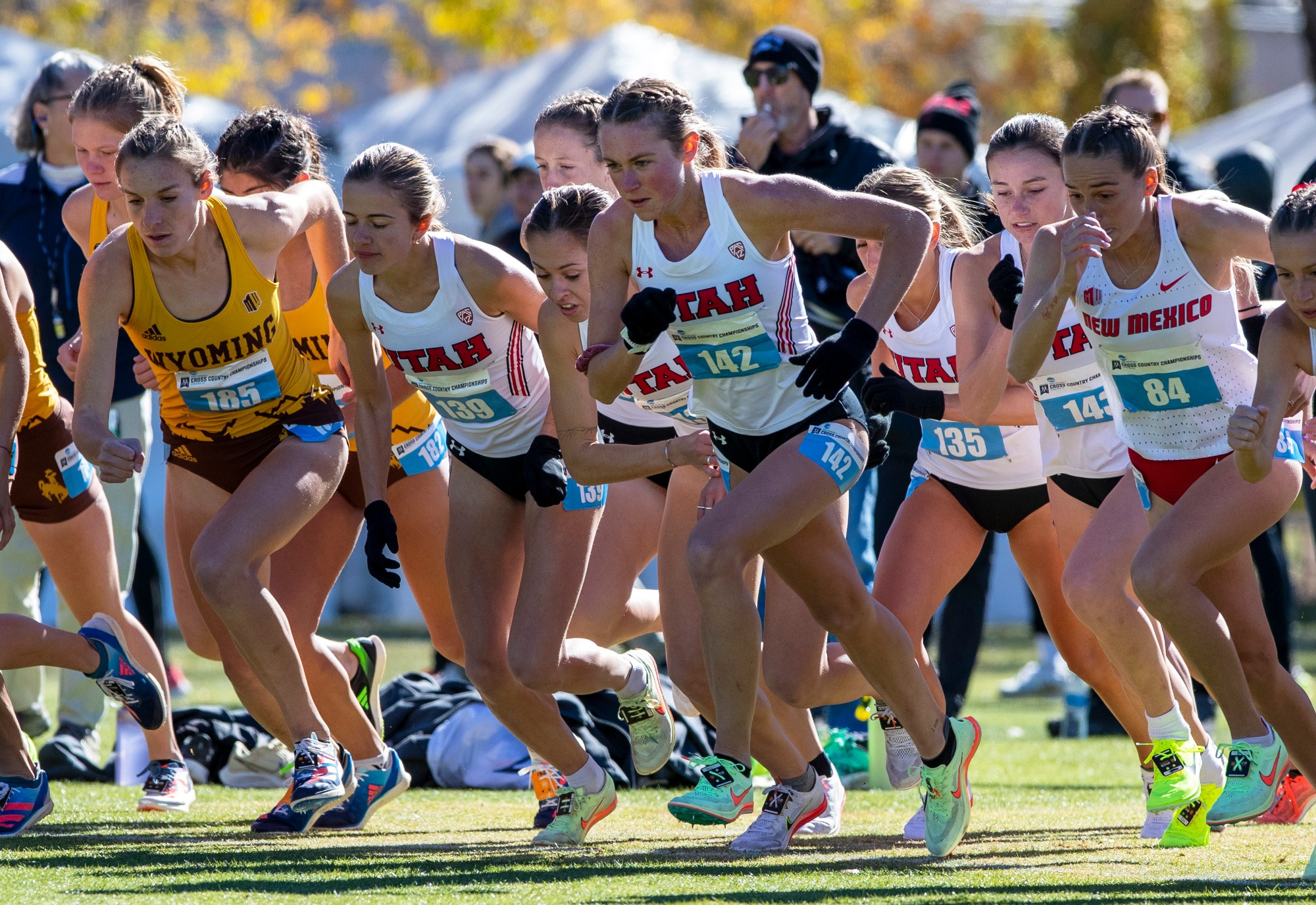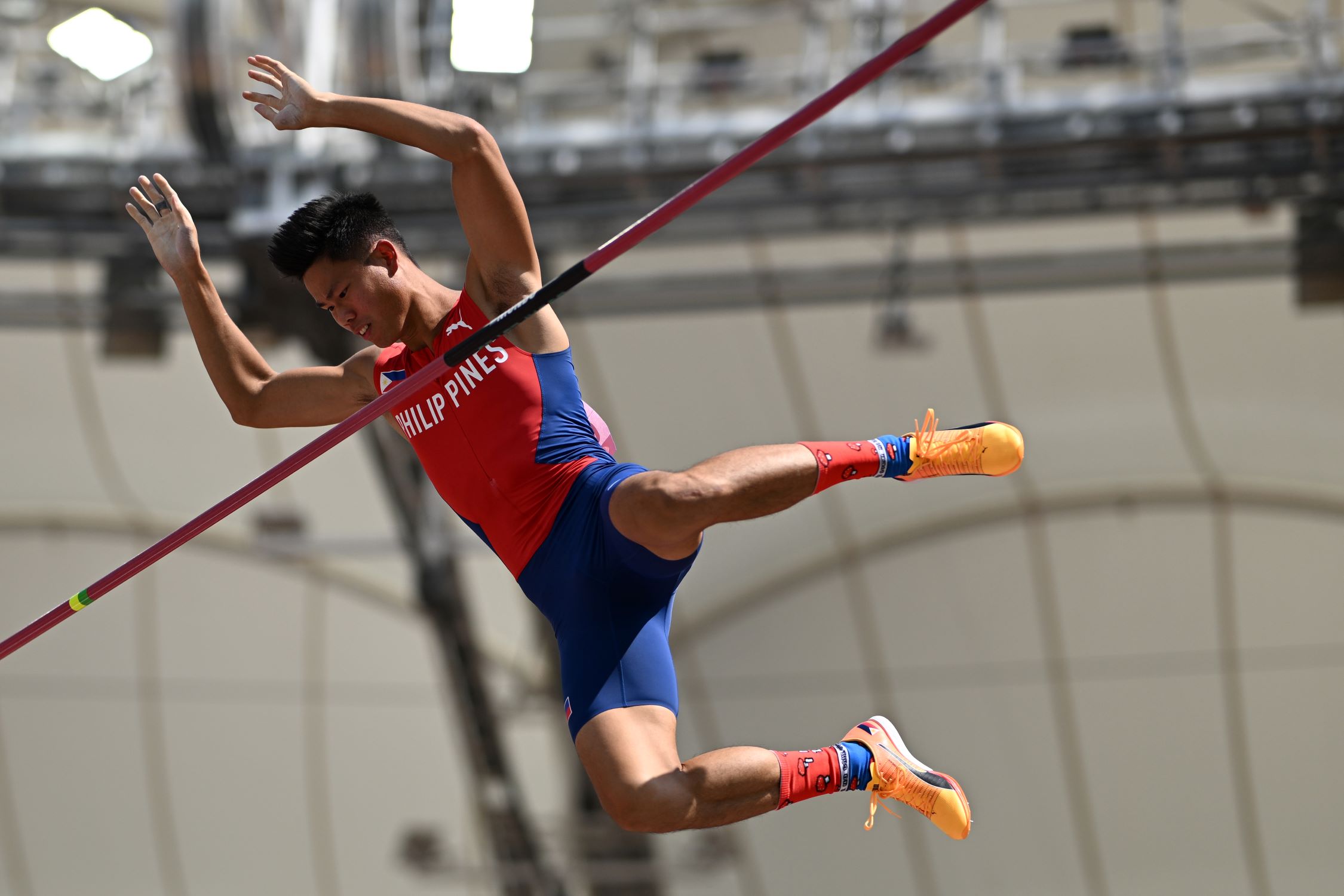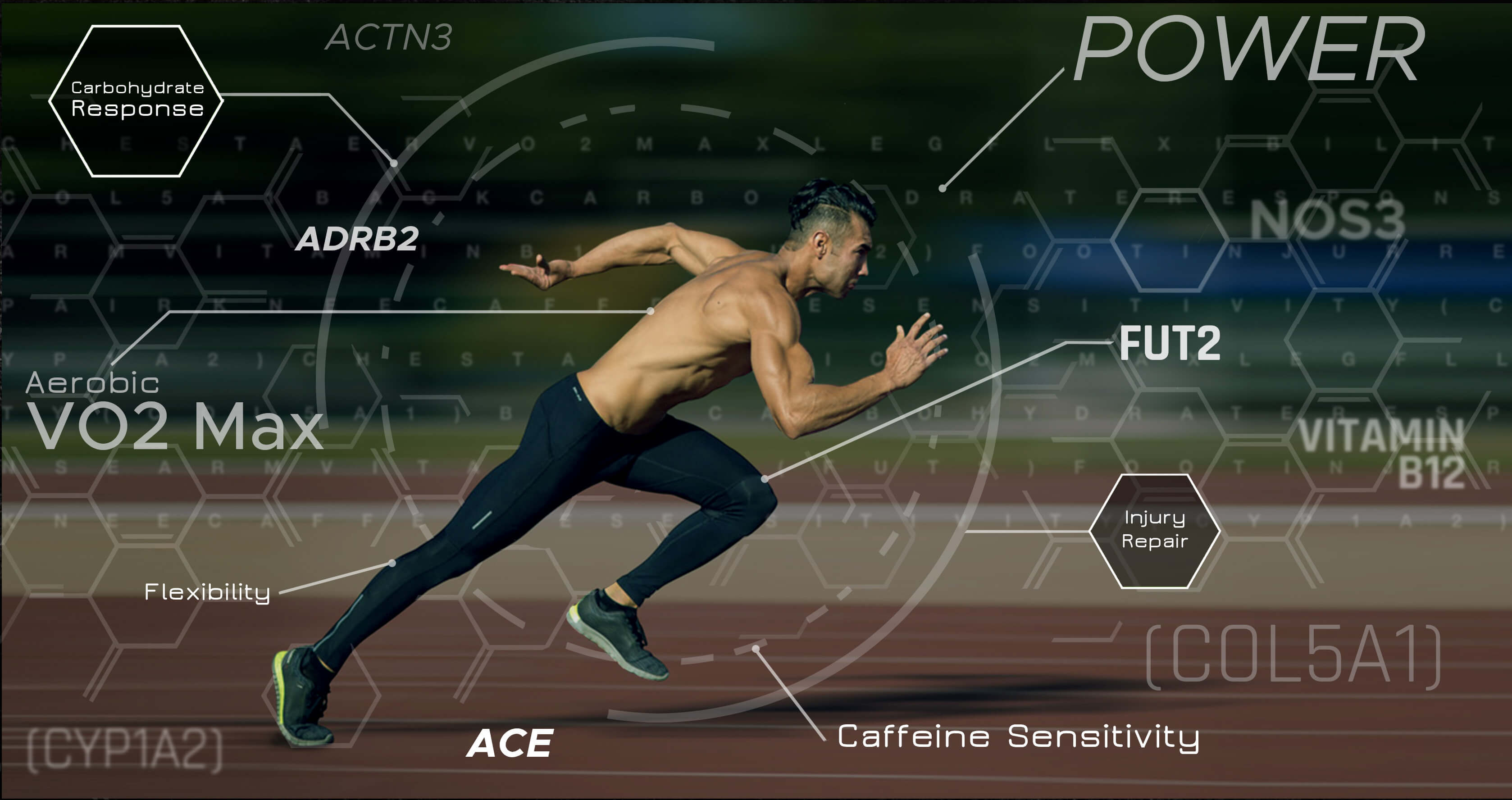

Featured
How To Increase Athletic Performance
Modified: August 19, 2023
Boost your athletic performance with these featured tips and techniques. Learn how to enhance your skills and reach new heights in sports.
Introduction
Athletic performance plays a crucial role in the success of any athlete, whether they are competing at a professional level or simply striving to improve their personal best. The ability to excel in sports requires a combination of physical and mental attributes, as well as a commitment to training and development. In this article, we will explore various strategies and techniques to increase athletic performance and optimize potential.
Athletic performance encompasses a wide range of skills and abilities, including strength, speed, agility, endurance, flexibility, and mental focus. Each of these elements is interconnected and contributes to an athlete’s overall success. By honing in on these key areas and implementing targeted training methods, athletes can enhance their performance levels and achieve optimal results.
Furthermore, athletic performance is not solely limited to competitive sports. It is applicable to anyone engaged in physical activities, from recreational enthusiasts to weekend warriors. No matter what level of athleticism one possesses, there is always room for improvement and growth.
Improving athletic performance goes beyond just sheer physical abilities. Mental strength, resilience, and discipline are equally important components. Developing a positive mindset and possessing mental fortitude can significantly impact an athlete’s performance on the field or court.
In the following sections, we will delve into specific strategies and techniques that can be employed to increase athletic performance. From setting goals and optimizing nutrition to implementing effective training methods and recovery strategies, this article will provide valuable insights and practical advice to help athletes boost their athletic abilities.
Importance of Athletic Performance
Athletic performance holds immense significance, not only in the realm of sports but also in various aspects of life. Whether you are a professional athlete aiming for championships or an individual seeking personal improvements, enhancing athletic performance is crucial for several reasons.
Firstly, athletic performance directly impacts an athlete’s ability to achieve their goals and succeed in their respective sports. Higher levels of performance often translate to better results, increased competitiveness, and higher chances of winning. Whether it’s setting personal records, winning matches, or qualifying for major events, improved athletic performance is the key to accomplishment.
Furthermore, athletic performance plays a vital role in an athlete’s overall health and well-being. Engaging in regular physical activity and striving for peak performance helps to maintain cardiovascular health, strengthen muscles and bones, and enhance overall fitness. It is well-established that individuals who engage in regular physical activity have a lower risk of developing chronic diseases, such as heart disease, obesity, and diabetes.
Additionally, athletic performance promotes mental and psychological well-being. Physical exercise releases endorphins, which are natural mood boosters that can alleviate stress, anxiety, and depression. Moreover, achieving athletic goals and witnessing progress enhances self-confidence and self-esteem, leading to a positive self-image and improved mental resilience.
Athletic performance also holds social significance. Successful athletes often serve as role models and sources of inspiration for others. Their achievements provide motivation and encouragement to individuals of all ages and backgrounds to engage in physical activity and strive for personal growth. Through their performances, athletes inspire others to believe in the power of hard work, dedication, and perseverance.
Furthermore, improved athletic performance can unlock opportunities for athletes. Exceptional performance may attract sponsors, endorsements, and contracts with professional teams, leading to financial rewards and career advancements. Moreover, standout performances may open doors for scholarships and educational opportunities, allowing athletes to pursue higher education while continuing their athletic journey.
Overall, athletic performance is essential for athletes and individuals alike. It enables athletes to reach their full potential, improve their overall health, and enhance their mental and social well-being. By striving for and achieving optimal athletic performance, athletes can create a positive impact on their own lives and inspire others to do the same.
Setting Goals for Athletic Performance Enhancement
Setting goals is a fundamental aspect of athletic performance enhancement. Without clear objectives, athletes may find it challenging to stay focused and motivated in their training and development efforts. Setting effective goals provides direction, structure, and a sense of purpose, ultimately leading to improved athletic performance.
When it comes to setting goals for athletic performance enhancement, it is essential to consider both short-term and long-term objectives. Short-term goals are smaller, achievable milestones that contribute to the overall progress, while long-term goals are the ultimate targets an athlete strives to reach.
Effective goals are specific, measurable, attainable, relevant, and time-bound (SMART). Specific goals outline precisely what an athlete wants to achieve, whether it’s increasing strength, improving agility, or enhancing endurance. Measurable goals allow athletes to track their progress and assess if they are moving closer to their targets. Attainable goals should be challenging yet realistic, taking into account an athlete’s current abilities and training capacity. Relevant goals align with an athlete’s overall performance aspirations and specific sport requirements. Time-bound goals have a defined timeline for achievement, providing a sense of urgency and accountability.
It is crucial to set both outcome-based goals and process-oriented goals. Outcome-based goals focus on the end result, such as winning a competition or achieving a specific time record. Process-oriented goals, on the other hand, emphasize the actions, behaviors, and habits that an athlete must develop to reach their desired outcomes. These goals are within an athlete’s control and focus on continuous improvement and skill development.
Additionally, goal setting should encompass various aspects of athletic performance. It can include goals related to strength and conditioning, speed and agility, flexibility and mobility, endurance, technical skills, and mental fortitude. By addressing multiple areas, athletes can create a well-rounded approach to enhancing athletic performance.
Regularly reviewing and reassessing goals is crucial for progress. As athletes achieve their objectives, new goals can be set to continue pushing boundaries and striving for improvement. This iterative process ensures continuous growth and development within an athlete’s athletic journey.
In summary, setting goals is an integral part of athletic performance enhancement. By establishing specific, measurable, attainable, relevant, and time-bound objectives, athletes can stay focused, motivated, and on track to reach their full potential. Combined with effective training methods and strategies, goal setting creates a roadmap for success and fosters continuous improvement in athletic performance.
Nutrition and Hydration for Optimal Performance
Nutrition and hydration play a vital role in maximizing athletic performance. Proper fueling and hydration provide athletes with the energy, nutrients, and hydration necessary to perform at their best during training sessions and competitions. By paying close attention to their dietary intake and hydration habits, athletes can optimize their performance levels and enhance their overall athletic abilities.
A well-balanced diet that includes a variety of nutrient-dense foods is crucial for athletes. Carbohydrates are the primary source of fuel for the body, providing the energy needed for physical activity. Including complex carbohydrates such as whole grains, fruits, and vegetables in the diet ensures a steady release of energy. Protein is essential for muscle repair and growth, and incorporating lean sources such as poultry, fish, tofu, and legumes is recommended. Healthy fats from sources like avocados, nuts, and olive oil provide energy and support overall health.
Timing is also crucial when it comes to nutrition for athletic performance. Consuming a balanced meal or snack containing carbohydrates, protein, and fats about two to three hours before exercise helps fuel the body and optimize performance. During extended exercise sessions, consuming carbohydrates in the form of sports drinks or energy gels can help maintain energy levels.
Hydration is equally important for optimal performance. Dehydration can negatively impact athletic performance, leading to fatigue, reduced endurance, decreased focus, and impaired cognitive function. Athletes should aim to drink fluids consistently throughout the day and especially before, during, and after exercise. Water is generally sufficient for shorter workouts, while longer or more intense activities may necessitate the consumption of sports drinks that replenish electrolytes.
In addition to proper nutrition and hydration, athletes should consider individual factors such as body composition, training intensity, and environmental conditions when fine-tuning their dietary needs. Working with a registered dietitian who specializes in sports nutrition can provide personalized guidance and support.
It’s important to note that nutrition and hydration are ongoing processes that require consistency. Athletes should strive to maintain a balanced and nutritious diet beyond training sessions and competitions. Adopting healthy eating habits as part of a lifestyle ensures that the body is adequately fueled and primed for optimal athletic performance.
In summary, nutrition and hydration are key factors in maximizing athletic performance. By consuming a well-balanced diet, paying attention to timing, and staying properly hydrated, athletes provide their bodies with the fuel and nutrients needed for optimal performance. Prioritizing these elements as part of a comprehensive training program can lead to improved endurance, enhanced strength, and overall better athletic performance.
Strength and Conditioning Training
Strength and conditioning training is a critical component of enhancing athletic performance. It involves targeted exercises and workouts designed to improve an athlete’s strength, power, speed, agility, and overall physical performance. Incorporating a well-rounded strength and conditioning program into training routines can yield significant benefits for athletes at all levels.
Strength training is focused on building muscular strength and power. It typically involves exercises that target major muscle groups, such as squats, deadlifts, bench presses, and overhead presses. These exercises challenge the muscles, increasing their ability to produce force and promoting muscular growth. Strength training not only enhances an athlete’s overall strength but also improves joint stability, reduces the risk of injury, and enhances body composition.
Conditioning training, on the other hand, is aimed at improving an athlete’s overall cardiovascular endurance, stamina, and work capacity. It often involves activities such as running, cycling, rowing, and high-intensity interval training (HIIT). Conditioning workouts improve the efficiency of the cardiovascular system, allowing athletes to sustain their performance for longer durations and recover more quickly between bouts of intense activity.
When implementing a strength and conditioning program, it is important to consider the specific demands of the sport or activity. Exercises should be selected to address the movements, energy systems, and muscle groups utilized during competition. Additionally, a well-structured program should include progressive overload, gradually increasing the intensity, volume, or complexity of the exercises over time to continually challenge the body and stimulate adaptation.
Proper form and technique should always be prioritized during training sessions to maximize effectiveness and minimize the risk of injury. Working with a qualified strength and conditioning coach or personal trainer can ensure that exercises are performed correctly, and individual skill levels and goals are taken into consideration.
It is also crucial to note that strength and conditioning training should be periodized to allow for adequate rest and recovery. Periodization involves dividing training into distinct phases, each with its own specific goals and emphasis. This approach helps prevent overtraining, promotes adaptation, and optimizes performance improvements.
Lastly, integrating functional training, such as balance exercises, plyometrics, and sport-specific drills, into the strength and conditioning program can further enhance athletic performance. These exercises improve coordination, proprioception, and sport-specific skills, allowing athletes to transfer their training gains more effectively to their chosen activity.
In summary, strength and conditioning training is a vital component of athletic performance enhancement. Incorporating a well-structured program that includes strength training, conditioning workouts, and sport-specific exercises can lead to improvements in strength, power, endurance, and overall physical performance. By designing and implementing a personalized training plan, athletes can maximize their potential and excel in their chosen sport or activity.
Speed and Agility Training
Speed and agility are essential attributes for athletes in many sports, including track and field, soccer, basketball, and tennis. Improving speed and agility can give athletes a competitive edge, allowing them to react quickly, change direction, and perform explosive movements with precision. Speed and agility training focuses on developing the neuromuscular coordination and physical capabilities needed to excel in these areas.
Speed training is geared towards enhancing an athlete’s maximum running speed. It involves exercises such as sprints, interval training, and resistance training to improve stride length, stride frequency, and overall running mechanics. Proper running form, including arm swing, foot strike, and body positioning, is emphasized to optimize efficiency and speed. Increasing sprinting power and explosiveness is also a key component of speed training, as it enables athletes to generate and transfer force more efficiently.
Agility training, on the other hand, focuses on an athlete’s ability to change direction quickly, accelerate, decelerate, and perform rapid movements with precision. Agility drills often involve lateral movements, cone drills, ladder drills, and reaction drills. These exercises improve an athlete’s footwork, coordination, reaction time, and spatial awareness, enabling them to maneuver through complex movements and obstacles with ease.
Speed and agility training should be tailored to the specific requirements of the sport or activity. Different sports may prioritize different aspects of speed and agility, such as straight-line acceleration, quick direction changes, or reaction speed. Athletes should work with coaches or trainers who are knowledgeable in their respective sports to design training plans that address their specific needs.
Furthermore, incorporating plyometric exercises can enhance the effectiveness of speed and agility training. Plyometrics involve explosive movements that generate maximum force in a short amount of time, such as depth jumps, box jumps, and bounding exercises. These exercises improve muscular power, reactive strength, and the ability to generate force rapidly, all of which contribute to faster sprinting, quicker change of direction, and improved overall athletic performance.
Consistency is key when it comes to speed and agility training. Regular practice and repetition of drills, combined with gradual progression and intensity, lead to improved speed, agility, and motor skills. It is essential to ensure that training sessions are balanced and allow for adequate rest and recovery to prevent overuse injuries and optimize performance gains.
Lastly, it is crucial to incorporate proper warm-up and cooldown routines into speed and agility training sessions. A dynamic warm-up helps prepare the body for the demands of the workouts, while a cooldown session with static stretching helps reduce muscle soreness and prevent injuries.
In summary, speed and agility training are vital for athletes looking to enhance their performance. By incorporating speed, power, and agility exercises specific to their sport, athletes can develop the physical capabilities needed to excel in quick movements, change of direction, and explosive actions. Consistent training, proper form, and gradual progression are essential in optimizing speed and agility gains and helping athletes reach their full potential.
Flexibility and Mobility Exercises
Flexibility and mobility are critical factors in athletic performance. Improving flexibility allows for a greater range of motion, while mobility enhances an athlete’s ability to move efficiently and effectively. Incorporating targeted flexibility and mobility exercises into training routines can help athletes prevent injuries, improve performance, and optimize overall movement quality.
Flexibility exercises focus on the ability of muscles and joints to stretch and lengthen. Static stretching, which involves holding a stretch for a prolonged period, is commonly used to improve flexibility. Dynamic stretching, on the other hand, involves moving through a range of motion, increasing blood flow and warming up the muscles before physical activity. Balancing both types of stretching is essential for a well-rounded flexibility routine.
Common flexibility exercises include hamstring stretches, calf stretches, quadriceps stretches, and hip stretches. Other areas to target include the shoulders, back, and chest. It is important to emphasize proper form and technique during stretching exercises to avoid injury and maximize effectiveness.
Mobility exercises focus on joint mobility and range of motion. These exercises aim to improve the ability of joints to move freely and smoothly without any restrictions. Examples include hip rotations, shoulder circles, spinal twists, and ankle circles. Mobility exercises often involve dynamic and controlled movements that mimic the actions required in an athlete’s sport or activity.
Implementing exercises that combine flexibility and mobility, such as yoga or Pilates, can provide comprehensive benefits. These practices not only enhance flexibility and mobility but also improve stability, balance, and body awareness. They can also help athletes develop a mind-body connection, which is crucial for optimal performance.
Regularly incorporating flexibility and mobility exercises into training routines is essential. Static stretching exercises are most effective when performed after a workout or training session, as the muscles are warm. Dynamic stretching and mobility exercises can be integrated as part of the warm-up routine before physical activity to prepare the body for movement.
Adequate recovery and rest are also essential for improving flexibility and mobility. Rest and recovery allow for muscle repair and help prevent overuse injuries. Foam rolling, massage, and active recovery techniques, such as gentle stretching or low-impact activities, can further aid in recovery and maintain flexibility and mobility.
For athletes participating in sports that require specific flexibility or mobility, it is important to tailor exercises to address those needs. Working with a qualified coach, physical therapist, or athletic trainer can provide guidance and ensure that the exercises are appropriate and effective for the specific demands of the sport.
In summary, incorporating regular flexibility and mobility exercises into training routines is crucial for athletes. By improving flexibility and mobility, athletes can enhance range of motion, prevent injuries, and optimize movement quality. Emphasizing both static and dynamic stretching, along with targeted mobility exercises, allows athletes to develop flexibility and mobility tailored to their specific needs and sports.
Recovery and Rest Strategies
Recovery and rest are essential components of any training program and play a crucial role in enhancing athletic performance. Adequate recovery allows the body to repair and rebuild muscles, replenish energy stores, and minimize the risk of overuse injuries. Implementing effective recovery and rest strategies can help athletes maximize their training gains, optimize performance, and maintain long-term physical and mental well-being.
One of the most important recovery strategies is ensuring sufficient sleep. During sleep, the body undergoes various processes that aid in recovery, including the release of growth hormones, tissue repair, and consolidation of learning and memory. Aim for 7-9 hours of quality sleep each night to promote optimal recovery and performance.
Active recovery is another valuable strategy. Engaging in light exercise or low-intensity activities, such as swimming, cycling, or yoga, can increase blood flow, help flush out metabolic waste, and promote a faster recovery process. Active recovery also helps to reduce muscle soreness and stiffness, allowing athletes to return to training feeling refreshed and ready to perform.
Implementing proper nutrition and hydration also plays a crucial role in recovery. Consuming a balanced meal or snack containing carbohydrates, proteins, and fats soon after a workout helps replenish depleted energy stores and supports muscle repair and growth. Adequate hydration is essential to replace fluid lost through sweat and promote optimal cellular function.
Incorporating rest days into training programs is equally important. Rest days allow the body to recover and adapt to the stress of physical activity. Athletes should schedule at least one or two rest days per week, during which they can engage in light activities or completely refrain from exercise. These rest days help prevent overtraining, reduce the risk of injuries, and ensure a balanced training regimen.
Massage, foam rolling, and other forms of self-myofascial release can aid in muscle recovery and reduce muscle tension. These techniques help release tight muscles and knots, promote blood circulation, and alleviate muscle soreness. It is recommended to include these practices as part of a regular recovery routine.
Mental relaxation techniques, such as meditation, deep breathing exercises, or mindfulness practices, can also contribute to overall recovery. These techniques help reduce stress levels, promote mental clarity, and improve focus. Taking time for mental relaxation not only aids in physical recovery but also supports mental well-being and overall performance.
Finally, allowing for planned recovery periods throughout the training year is essential. Periodization involves dividing training into distinct phases, incorporating periods of increased intensity followed by periods of reduced intensity and recovery. This approach ensures that athletes have adequate time to recover, adapt, and continue making progress.
In summary, implementing effective recovery and rest strategies is vital for athletes looking to optimize their performance. Prioritizing sleep, engaging in active recovery, consuming proper nutrition, incorporating rest days, utilizing self-myofascial release techniques, practicing mental relaxation, and implementing periodization are all valuable strategies that support recovery, minimize the risk of injuries, and promote long-term athletic success.
Mental Preparation and Focus Techniques
Mental preparation and focus are key factors in athletic performance. The ability to maintain a focused mindset, manage stress, and stay mentally prepared can greatly impact an athlete’s ability to perform at their best. Incorporating effective mental preparation and focus techniques into training and competition routines is crucial for maximizing athletic potential.
Visualization is a powerful technique that allows athletes to mentally rehearse their performance, visualize success, and build confidence. By creating vivid mental images of executing skills, overcoming challenges, and achieving goals, athletes can enhance their performance and develop a positive mindset. Regular visualization practice helps athletes build familiarity with specific scenarios, improve technique, and reduce anxiety.
Setting clear goals and intentions before training or competition helps athletes stay focused and motivated. This includes both long-term goals and short-term goals for specific sessions or events. Goals should be realistic, measurable, and challenging to provide a sense of direction and achievement. Visualizing the desired outcome while setting goals can further enhance motivation and focus.
Developing a pre-performance routine can help athletes get into the right mental state before competing or training. This routine may include activities such as stretching, deep breathing exercises, visualization, and positive self-talk. Engaging in a consistent pre-performance routine helps athletes transition from a relaxed state to a focused and energized mindset.
Practicing mindfulness and staying present in the moment is essential for maintaining focus. Mindfulness techniques, such as deep breathing, body scan meditation, or guided imagery, help athletes stay grounded and focused on the task at hand. By training the mind to let go of distractions and refocus on the present moment, athletes can improve concentration and performance.
Positive self-talk is another valuable technique for maintaining focus and boosting confidence. Encouraging and positive self-statements, such as “I am strong” or “I can do this,” can help athletes overcome self-doubt and maintain a positive mindset during training and competition. Using affirmations regularly can rewire the brain to develop a more optimistic and resilient mindset.
Managing stress and anxiety is crucial for optimal performance. Implementing stress management techniques, such as deep breathing exercises, progressive muscle relaxation, or engaging in hobbies outside of sports, can help athletes stay calm and focused under pressure. It is important to recognize the signs of stress and develop coping mechanisms to effectively handle stressful situations while maintaining focus.
Finally, seeking support from mental performance coaches, psychologists, or sports counselors can provide valuable guidance and assistance in enhancing mental preparation and focus. These professionals can offer personalized strategies, tools, and techniques tailored to an athlete’s unique needs.
In summary, mental preparation and focus techniques are vital for optimizing athletic performance. Incorporating visualization, goal-setting, pre-performance routines, mindfulness, positive self-talk, stress management, and seeking professional support can help athletes develop a focused mindset, manage stress, and achieve their best performance. Building mental resilience and maintaining a positive mindset are key factors in unlocking an athlete’s full potential.
Injury Prevention and Rehabilitation
Injury prevention and rehabilitation are essential components of maintaining optimal athletic performance. By implementing proactive measures to prevent injuries and following effective rehabilitation protocols when injuries occur, athletes can minimize their downtime, recover faster, and reduce the risk of re-injury.
One of the most important aspects of injury prevention is ensuring proper warm-up and cool-down routines. A thorough warm-up prepares the body for physical activity by increasing blood flow, elevating body temperature, and priming the muscles and joints. It may include dynamic stretches, light cardio exercises, and specific movement drills. Cooling down with stretching and gentle exercises helps prevent muscle tightness and promote recovery.
Strengthening the muscles and maintaining good flexibility and mobility are crucial for injury prevention. Incorporating resistance training exercises that target all major muscle groups helps to improve overall strength and stability, reducing the risk of muscle imbalances and joint instability. Regular flexibility and mobility exercises, including stretching and foam rolling, help maintain optimal range of motion and prevent tightness and stiffness.
Proper technique and form during training and competition are essential for injury prevention. Athletes should work with coaches or trainers who can provide guidance on correct body mechanics and ensure that proper form is consistently maintained. This includes having the appropriate equipment, such as supportive footwear, protective gear, and properly fitted equipment for the specific sport or activity.
Implementing adequate rest and recovery is crucial for preventing overuse injuries. Giving the body time to recover between training sessions allows for muscle repair and adaptation. Athletes should incorporate rest days into their schedules and listen to their bodies, avoiding pushing through pain or fatigue that could lead to injury.
If an injury occurs, prompt and proper treatment is vital. Seeking medical attention or consulting with a sports medicine professional is recommended to obtain an accurate diagnosis and appropriate treatment plan. This may include rest, physical therapy, rehabilitation exercises, and, in some cases, the use of braces or immobilization devices. Following the prescribed rehabilitation plan diligently is essential for a successful recovery.
During the rehabilitation process, gradual progression of exercises is crucial to rebuild strength, improve flexibility, and restore functional movements. Physical therapists or athletic trainers can guide athletes through specific exercises and treatment modalities to regain strength, flexibility, and range of motion while preventing further injury and promoting healing.
It is important for athletes to prioritize proper nutrition and hydration during injury prevention and rehabilitation. Consuming a well-balanced diet rich in nutrients, such as lean proteins, whole grains, fruits, and vegetables, supports tissue repair and overall recovery. Staying adequately hydrated promotes optimal cell function and helps transport nutrients to the injured tissues.
Lastly, maintaining a positive mindset and having a support system in place play significant roles in the rehabilitation process. Staying mentally resilient and having a team of medical professionals, coaches, and teammates who provide encouragement and support can aid in the overall recovery journey.
In summary, injury prevention and rehabilitation are essential for athletes to maintain optimal performance. Incorporating warm-up and cool-down routines, strengthening exercises, proper technique, rest and recovery, seeking prompt treatment, and following rehabilitation guidelines are key strategies in preventing and recovering from injuries. Prioritizing these aspects promotes a healthy and sustainable approach to athletic performance.
Conclusion
Enhancing athletic performance requires a comprehensive approach that addresses various aspects of physical and mental well-being. From setting clear goals and implementing targeted training methods to focusing on nutrition, recovery, and injury prevention, athletes can optimize their performance and reach their full potential.
By incorporating strategies such as strength and conditioning training, speed and agility training, flexibility and mobility exercises, and mental preparation and focus techniques, athletes can improve their overall physical capabilities. These techniques enhance strength, power, endurance, speed, agility, and mental resilience, enabling athletes to excel in their chosen sports or activities.
Proper nutrition and hydration are essential for fueling and sustaining athletic performance. By consuming a well-balanced diet, athletes provide their bodies with the necessary nutrients, energy, and hydration to perform at their best. Combined with adequate rest and recovery strategies, nutrition supports muscle growth, optimal energy levels, and overall physical well-being.
Mental preparation and focus are vital for maintaining a competitive edge. Visualization, goal-setting, pre-performance routines, mindfulness practices, positive self-talk, and stress management techniques contribute to mental resilience and optimal performance. By strengthening the mind and managing stress, athletes can enhance their ability to stay focused and perform under pressure.
Injury prevention and rehabilitation are critical components of sustainable athletic performance. By prioritizing proper warm-up and cool-down routines, maintaining strength and flexibility, using proper technique, and seeking timely treatment and rehabilitation, athletes can minimize the risk of injuries and recover faster when injuries occur.
In conclusion, enhancing athletic performance requires a holistic approach that encompasses physical training, nutrition, mental preparedness, and injury prevention. By incorporating these strategies into their routines, athletes can optimize their potential, improve their overall performance, and enjoy long-term success in their chosen sports or activities.

